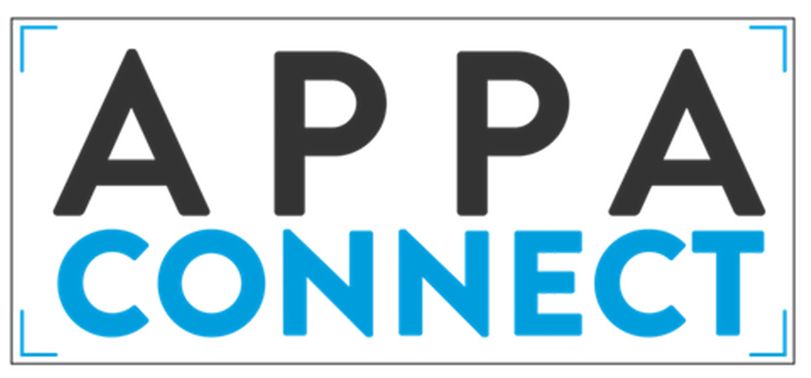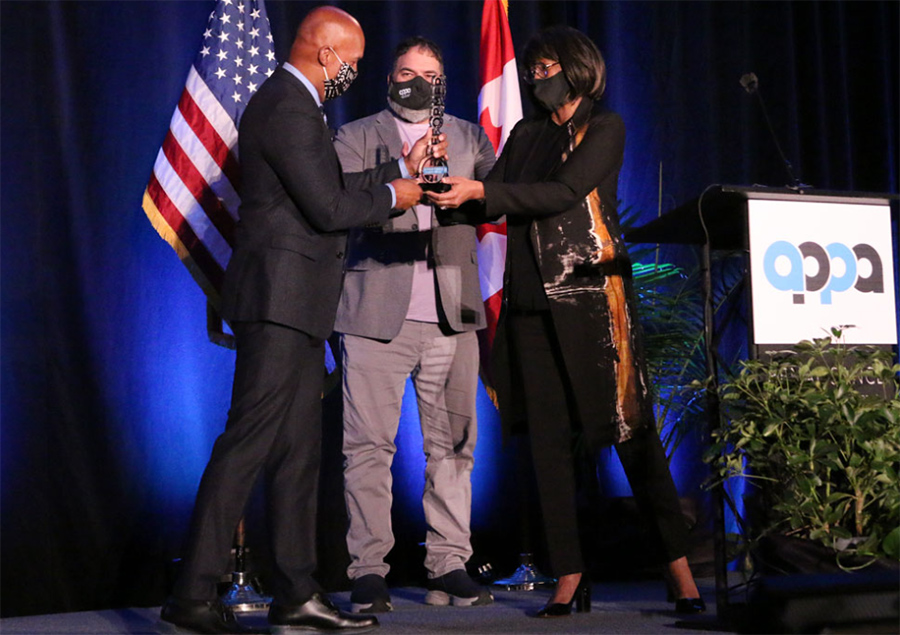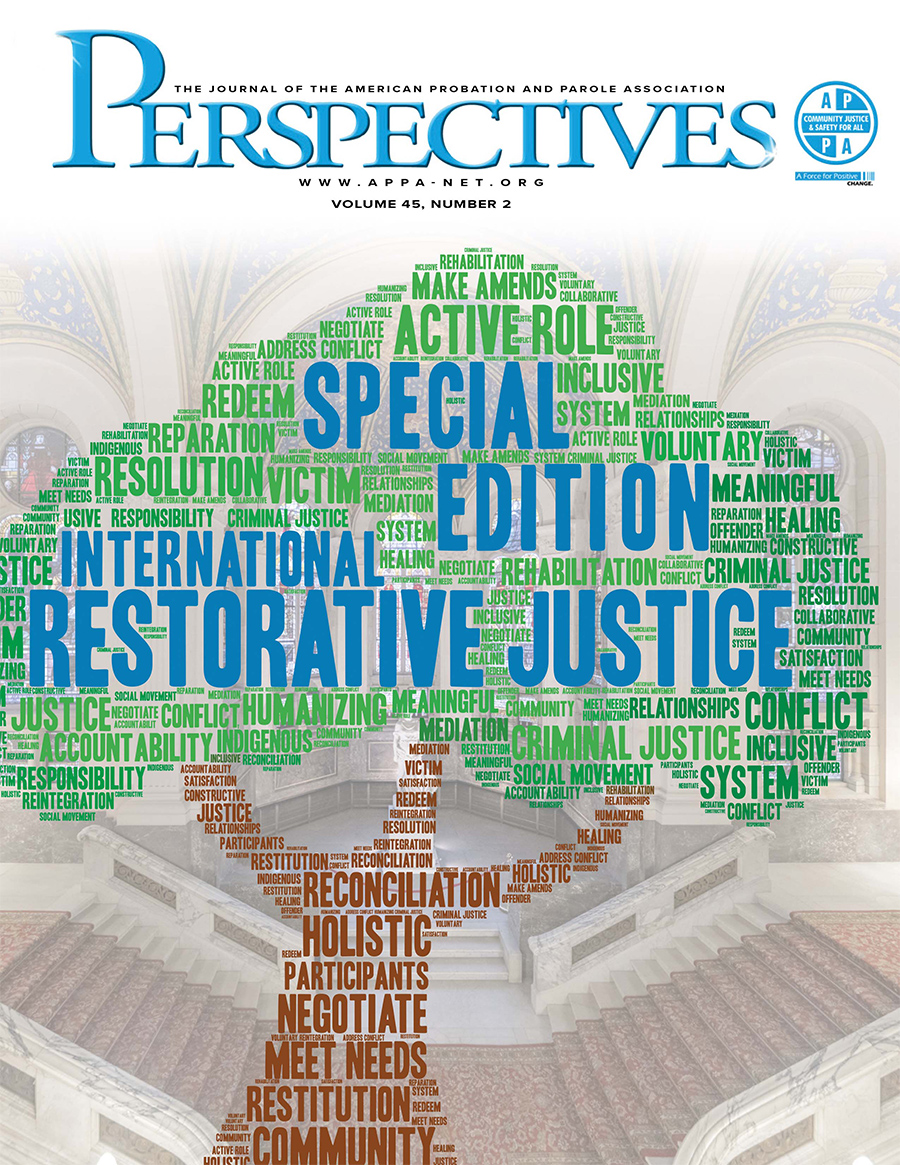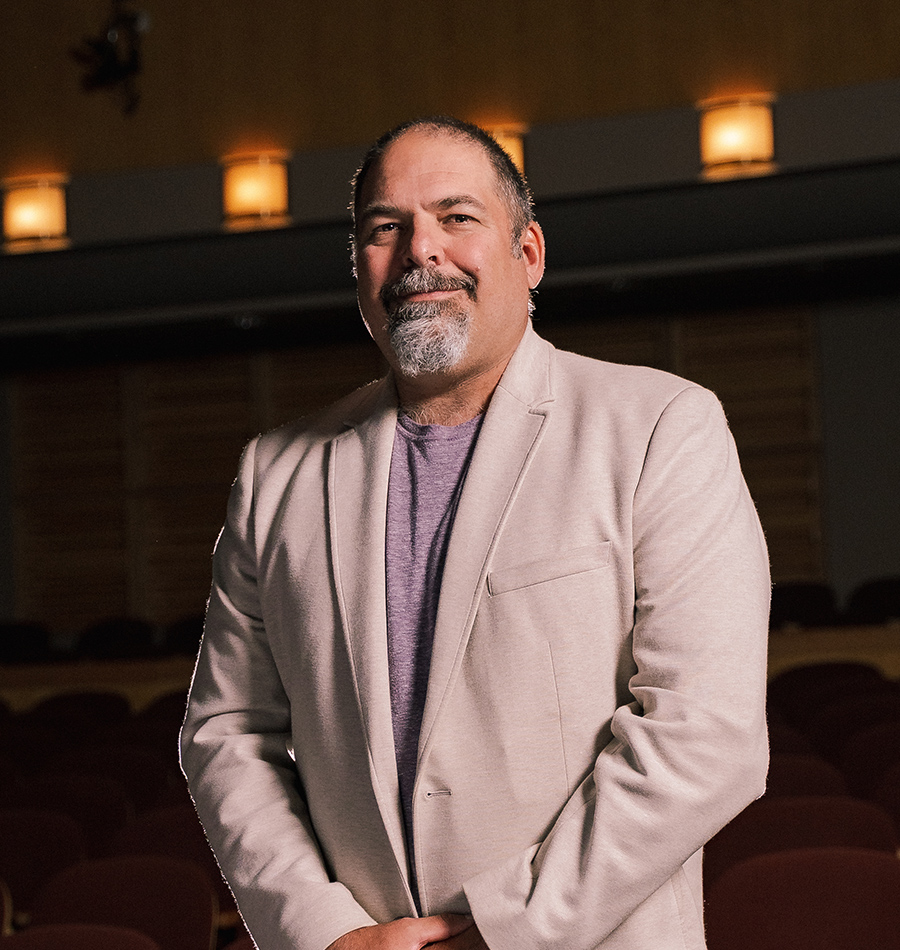Interview
Brian Lovins
President of the Board of Directors, American Probation and Parole Association (APPA), USA
As “the voice of the community corrections industry”, the American Probation and Parole Association (APPA) serves as the field’s leading professional membership association.
As APPA’s President, Dr Lovins is focused on supporting the association to contribute to the sector’s improvement through a more efficient and effective model. In this interview, he reveals that the issue of stigma, the need to change success metrics and humanization are critical priorities for community corrections.
What do you think are today’s primary concerns and challenges facing the correctional sector?
BL: Some current concerns are global. Migrations and extremism are growing issues that pose challenges to the day-to-day operations of justice system organizations. In particular, correctional agencies worldwide need
to address language, cultural and religious barriers.
A second area that has been very challenging is the COVID pandemic. Some countries chose to keep their staff at work for a few months, but that would never work in the United States. In the US, although we suspended visitation, staff still came in and out of facilities, which created a significant challenge.
Another big challenge is creating prisons as a more humane space. As the rest of the world knows, the US is the leader in punishment and incarceration. We have to rethink our prison system and what it’s used for – and rethink how we use corrections on the backend. We’ve flirted with this rehabilitation perspective up until the ’80s and ’90s. As we got tough on crime, we wiped away those spaces dedicated to treatment, education and services.
Ultimately it resulted in correctional environments that are designed poorly for rehabilitative efforts. Individuals
who are incarcerated are not in any better space when they come out! Although there’s been a push for “re-entry begins in intake”, we’ve focused too much on that. We need to recognize there is a loss, a mourning period
when people come to jail and prison.
There’s an adjustment period for people coming to prisons and jails – one that we should not ignore. We can’t think of the future before taking care of the current.
We need to rethink how we run our organizations and manage our reintegration work, both in the incarceration and community sides.
We must create more humane spaces for the people involved in the justice system.
How is the American Probation and Parole Association (APPA) contributing to moving community corrections forward?
BL: As “the voice of the community corrections industry”, APPA serves as the field’s leading professional membership association.
Our members are at all levels of government and the private sector, including community corrections professionals, service providers, educators, researchers, volunteers, public policy advocates, and others interested in justice reform. Thousands of members support APPA’s work throughout the US and Canada.
APPA has gone through some transitions over the last couple of years. We have been inwardly looking, trying to right our own house and become a more modern and structured organization. Our goal is to move the field forward through a more efficient and effective model.
To do this, we’re focused on three core areas. The first is addressing and taking on stigma. We find the stigma of labeling a significant problem, especially with people who use drugs, have engaged in sex offenses or use violence. For example, we often draw a strong line between programs for low-level, non-violent individuals versus individuals who engaged in a violent offense.
We rely on prison to change people who use violence. Yet, research has shown that we can significantly reduce violence through interventions as well. But to do so, we must change the language, the environment, and the workers’ role so that we can lean in and help people on supervision be successful, regardless of their type of criminal offense.
The second area is changing the narrative from negative to success. Historically, we have couched our work in failure.
Recidivism rates – the failing of the people we serve – is how we measure our output! We’re trying to start flipping that model to success rates. Let’s start talking about the people “we save” and the generations of people that community corrections have changed.
Often community corrections are the hidden portion of the corrections system in the US. So, it’s crucial to get the word out of what we do and how we help people move forward.
Community corrections play a vital role in the rehabilitation of individuals and the restoration of community safety.
And our third concern is about creating more humane spaces, where we’re providing support services to people who have engaged in criminal behavior – recognizing that communities are safer when people are able
to change their behavior.
We need to connect with them and bring our work to the person and their communities to do this. Moreover, we need to center the interventions around their needs. We should contextualize our work as probation and parole officers in the middle of people, their families, communities, culture and societies.
Our focus should be on amplifying their success to help them move forward and not just move through the system.

We must change the language, the environment, and the workers' role so that we can lean in and help people on supervision be successful, regardless of their type of criminal offense.
How does the work that APPA conducts materialize in practice?
BL: We deliver two annual institutes, providing training and learning opportunities to around 2,300 probation and parole officers.
During COVID, we went virtual, which expanded the reach of our events, allowing some first-time participants from across the country and world to attend the virtual institute.
In addition to the two institutes, we provide technical assistance and ongoing training opportunities to individual officers and agencies alike. And, with a focus on networking, we started an online platform that allows people to interact and connect – learning from the great work they are doing across the world.
This year we are adding a new feature: a quarterly roundtable hosted in different communities across the country. We foresee going to local communities with these roundtables, talking to the people under supervision
and working on the ground. We’ll have them all at the table to listen to what’s going on with them and see how we can help support them.
APPA also has a legislative response. We are trying to improve our legislative outreach, reviewing and supporting state and federal legislation and supporting those areas that move the field forward.
Finally, our research and policy arm does applied research. It helps understand how the field works by producing back out deliverables for those who work in the field and academics.



JT: You argue that the professional identity of community corrections’ professionals requires a redefinition. In a research article, you establish an analogy between probation officers and sports coaches. (Podcast interview Brian Lovins, The Criminologist).
What kind of change do you envision in the probation officer’s role
and profile?
BL: There’s been considerable interest in this concept of probation officers as coaches. The idea of a coach is that you’re invested in the person. You don’t work for the system. The system employs you, but your focus is on
helping the person move their life forward.
Our system tends to make community corrections officers referees. We give people a set of rules, and then the staff’s job is to apply the rules and monitor the conditions.
But, instead, we should be creating opportunities for people, giving them hope, and supporting their change process over time.
We shouldn’t expect perfection from the beginning because we know that many people under supervision have many barriers to success.
So, if we start tripping them up right away, they’re quickly going to fail. We see this in the US, where 50% of our state’s prison population come from failing probation.
We’ve got to do a better job creating a space where people can stay in the community and be successful. For more insight into the coaching model, we wrote an article that was published in Federal Probation Journal.
JT: When you were the Associate Director for the University of Cincinnati’s Corrections Institute (UCCI), you developed State-wide risk assessments. However, many jurisdictions still don’t commonly use validated risk and
need assessment instruments.
In your view, what role does risk assessment play in planning security measures, designing a rehabilitative path for offenders, or predicting recidivism, for instance? And how can technology, namely artificial intelligence and offender management systems, support this?
BL: In the US, there’s been a significant transition. I would say 70-80% of corrections systems have some variation of a risk assessment. Still, we’re witnessing a pullback from assessments due to concerns about
predominately racial bias.
Historically, risk assessment is about assessing a person, understanding their individual needs without thinking about anything else, from their environment to the layering of circumstances and the intersectionality of
race, ethnicity, sexual orientation, gender, age, culture, and communities.
I think it’s time to lean in and create a new generation of assessments that thinks more about the path forward and not what got us where we are. One of the things I’ve seen improve over the past ten years regarding risk assessment is transparency.
People understanding how the assessments are built is crucial. Transparency is fundamental when we use assessments in decision-making, like what level of supervision someone has or what kind of institution they’re
going to.
Ensuring that the assessments are valid for unique subgroups is incredibly important, especially given our racial and ethnic discrimination history.
Even with these issues, I want to be very clear. Structured assessments that rely on data are incredibly important. There’s not a single change-oriented profession that does not incorporate actuarial assessments into
its decision-making process.
It's time to create a new generation of assessments that thinks more about the path forward and not what got us where we are.



To what extent do you think technology could better support the overall mission of community corrections?
BL: We’ve leaned on surveillance technology a lot; we have electronic and GPS monitoring and a host of different measuring devices. While surveillance technology may be helpful in some areas, I’m not sure we
should be using it as much as we do.
I think we have to get away from this idea that somehow tracking a person will keep them from failing or that it is going to keep the community safe.
Often, technology allows us to catch a person quicker after they reoffend. Still, there are limited findings that suggest it will prevent reoffending.
There is a whole budding field of positive technology: technology that improves the outcomes of people on supervision. People in the corrections system are human beings. So, they need reminders, support services, and mobile apps that help them make and reinforce their better decisions. Positive technology supports them out of law-breaking lifestyles.
What role do you think staff training and development play in the community corrections arena?
BL: I’m not sure we got it right yet, but I think staff training and development is a huge component.
If you think about it, somewhere around 100,000-125,000 probation and parole officers in the US would all be left to their own devices and operate in their silos if it wasn’t for training and development.
To start, we should focus our efforts on hiring officers who believe people can change.
We should be less focused on technical skills and more on interpersonal skills. Then we can train and develop their professional skills around change-oriented interventions. For this reason, training is key to success.
I’m glad that we’re starting to see more around change-oriented approaches, long-term support, learning teams, and creating spaces where people can grow their skills.
We can’t train community corrections staff in a vacuum. Staff training and development will not be effective unless you have an organization around learning and curiosity.
What I’ve seen, in most of our settings, is a top-down hierarchical model that often fails to implement evidence-based practices effectively.
If we want to do a better job and have consistent positive and supportive interventions, we’ve got to rethink how we train and develop community corrections staff.
We are starting to shift how we train people, in part because of the pandemic. With increased virtual connections, we see greater accessibility, allowing for much more interaction, feedback, and real-time coaching than we’ve historically done.
As we start to turn the professionals on to this idea that they’re behavioral change specialists, the tools to do their jobs become more important.
Therefore, such tools get a much quicker adoption uptake.



We should focus our efforts on hiring officers who believe people can change. We should be less focused on technical skills and more on interpersonal skills.
Then we can train and develop their professional skills around change-oriented interventions. For this reason, training is key to success.
What, in your opinion, were the main challenges but also the
opportunities that arose from the COVID-19 pandemic?
BL: The first challenge and probably an opportunity is that we can’t do good corrections work unless staff are in healthy places. We started seeing people adopt much more of a wellness model, thinking about the staff’s
health and how that intersects with their work.
Community corrections have historically been office- and face-to-face based in the US. We believe that being in the same room with someone somehow creates a space to do better work. And we’ve challenged that concept! There’s no place in the country that isn’t telling us that they’d had a greater engagement with people on supervision with virtual connections and texting. Now people on supervision can stay at work, take a break and get on a video call with their probation/parole officer. This real-time engagement also allows for quicker interventions when people start to struggle.
The pandemic crisis has helped humanize our work and the people on supervision.
The virtual space allowed probation/parole officers to see into people’s lives. They saw how successful it could be to connect with someone and how more willing the people on supervision were.
The pandemic also brought corrections staff and people in their care together – often experiencing the greater health risks simultaneously. This crisis has helped open people’s eyes to health matters and helped probation
officers see people on supervision beyond their offense.
The other side of the pandemic is trauma. We’re starting to see an increase in conversations about this with staff. It forced us to have uncomfortable conversations, but it also opened our eyes to painful things that we don’t usually talk about.
I don’t know if these changes will stay after the pandemic. Corrections is built on a status quo model, meaning that change is hard. We often operate one way, and we will continue to work in that way. I’m hoping that it changes because I see the significant opportunity to engage people in different ways and think about the people on supervision, not as a burden to come to corrections, but as a support.
Now people don’t have to come in twice a month to take drug tests and check-in, sit in an office waiting for the appointment, and always meet face-to-face with their officer. I think it’s a more humane way of engaging people and allowing them to remain in their communities.
The more supportive we can be and the least intrusive we can be, the better. But I am fearful that we’ll slide back into a space where we’re going to expect people just to come back to the offices.
A lot of correctional institutions date from the industrial revolution. With the industrial revolution came conveyor belts and processes.
Unfortunately, we have designed Corrections [agencies] to operate in the same way. We are moving people through our system as they are on a conveyor belt, applying each stage to them.
We have to remember: our role is not to implement the system but to help people improve their lives. Our focus should be on the person! We would need a different model that’s more centrifugal. And I hate to say this, but I’m not sure that COVID-19 is powerful enough to disrupt the status quo.
Brian Lovins
President of the Board of Directors, American Probation and Parole Association (APPA), USA
Dr Brian Lovins earned his PhD in Criminology from the University of Cincinnati School of Criminal Justice. He has been the Assistant Director of the Harris County Community Supervision and Corrections Department in
Houston, Texas. He also worked as the Associate Director for the University of Cincinnati’s Corrections Institute, where he developed state-wide risk assessment tools and validated a series of pretrial risk assessments. Dr Lovins has published articles on risk assessment, sexual offenders, effective interventions, etc. Currently, he is a Principal for Justice System Partners.


